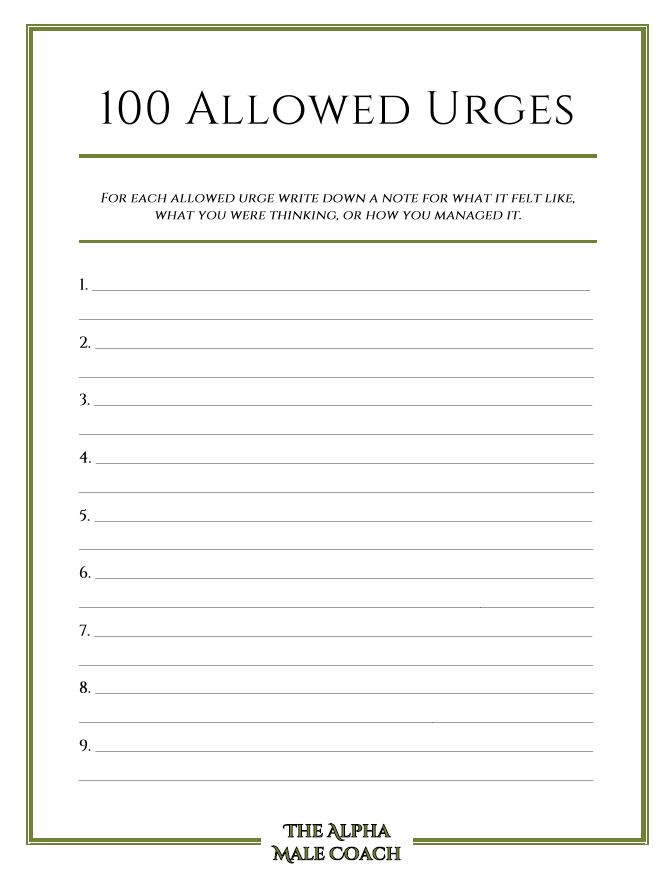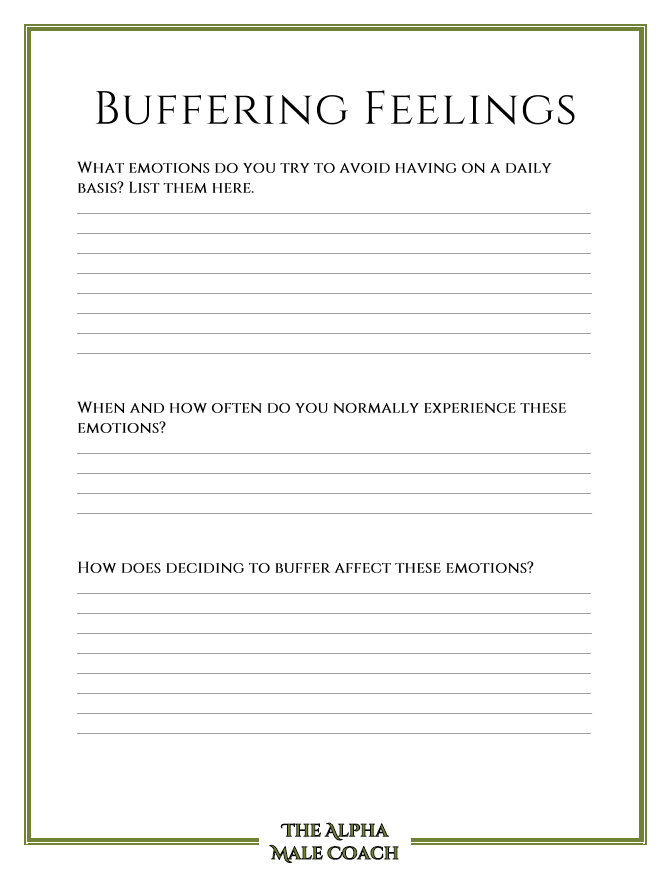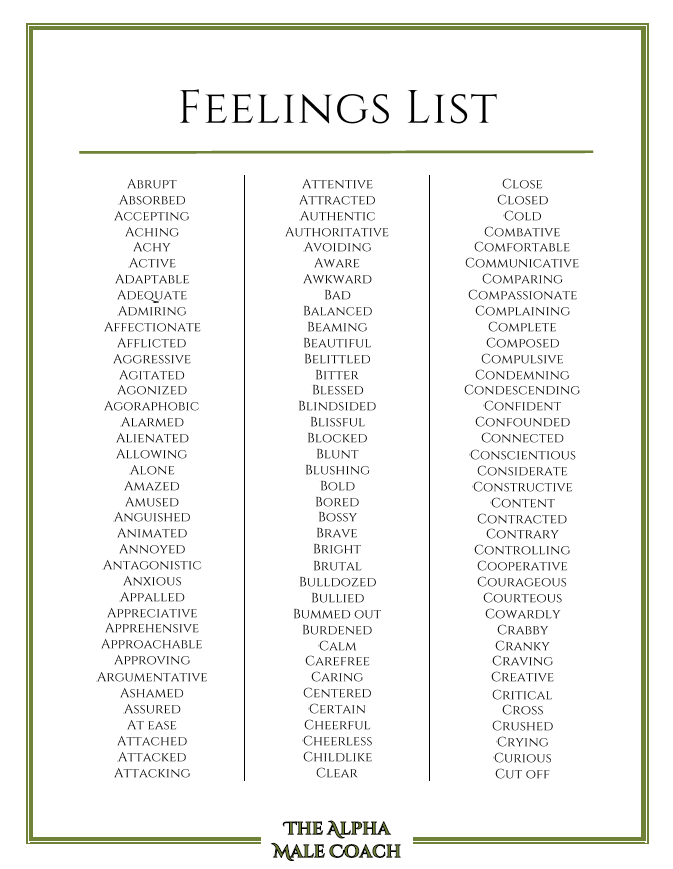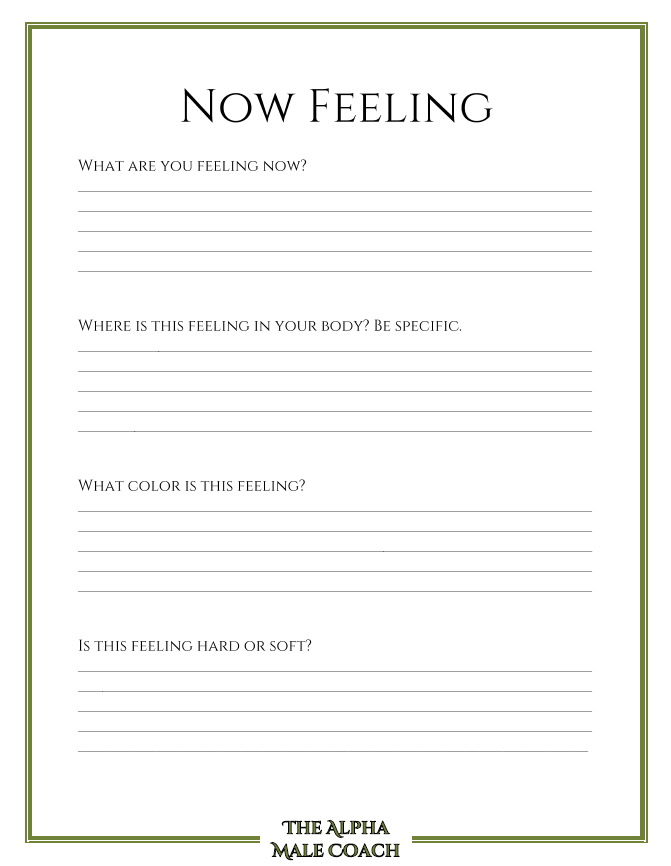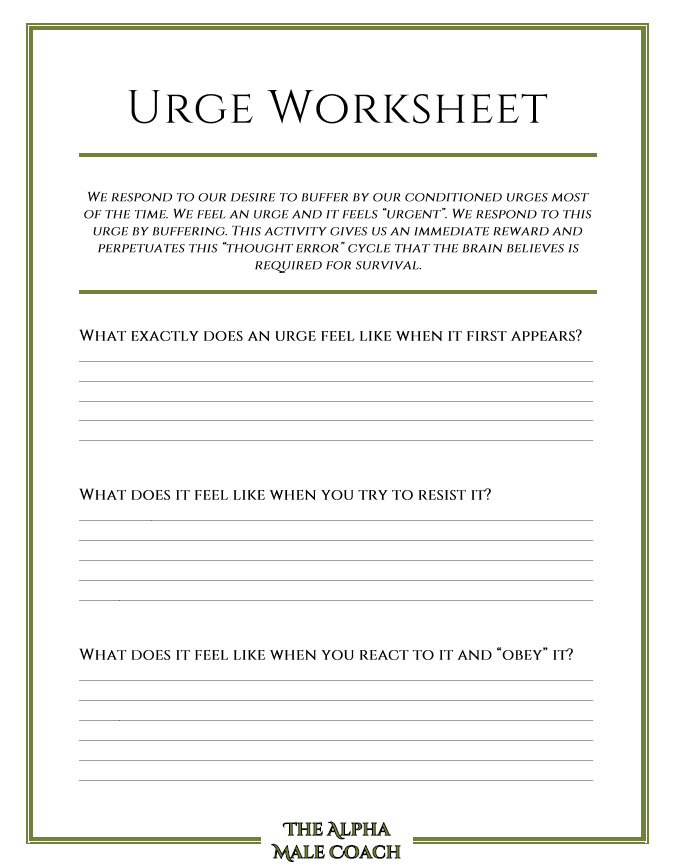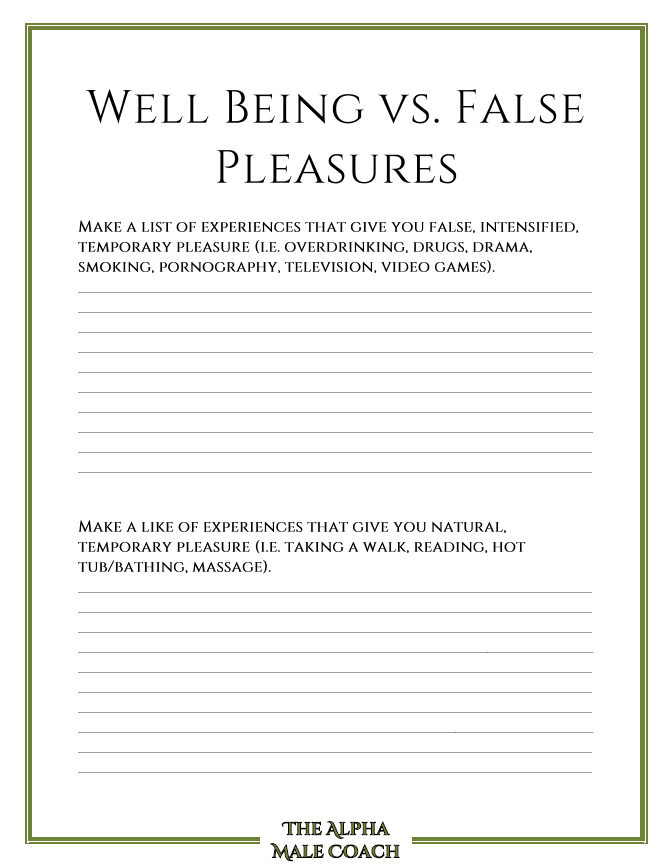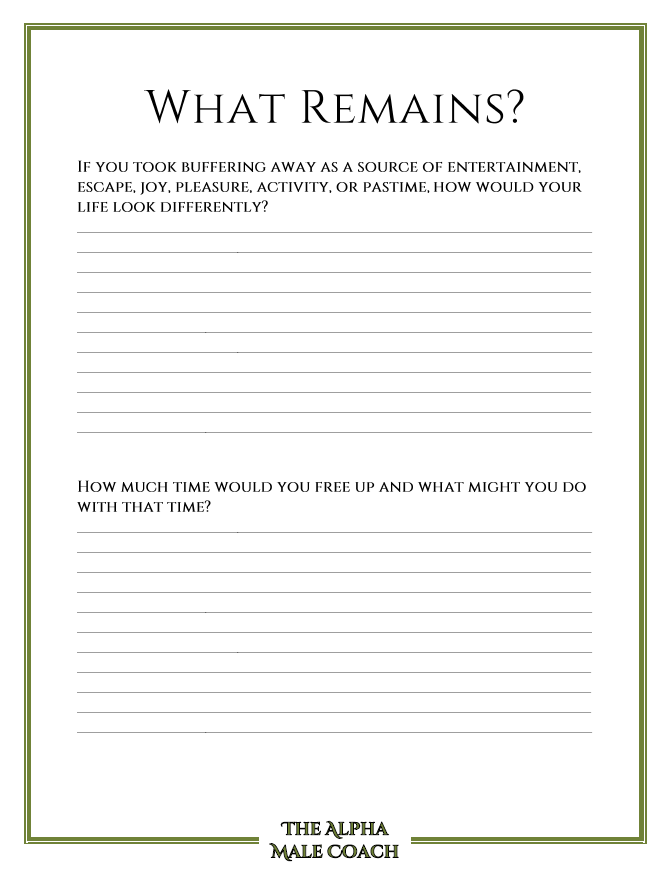Module 4 – Allowing, Processing, and Unlearning
How To Allow & Process Emotions/Feelings
Most of us aren’t taught to deal with our emotions. We don’t know how to process emotions and we aren’t taught that discomfort is a valued and necessary part of the human experience. No one tells us that half of our lives are going to be negative emotions that make positive emotions even more enjoyable. So, because we believe we should be happy all the time, and since we aren’t taught to welcome negative emotions, we resist them or attempt to numb or avoid these emotions with alcohol, pornography, drugs, social media, or other buffers.
It makes sense that to change your buffering habit, you must stop trying to numb your emotions with false pleasures. The way you do this is to learn to allow and
process your feelings. When we can allow negative emotions, we gain authority over them.
When we resist or avoid them, we suffer.
Simply put, a feeling is a vibration in the cells in our bodies. Nothing more. A feeling is different from a physical sensation like hunger. Physical sensations start in the body and travel to the brain. Feelings are always caused by thoughts and then become vibrations in the cells in our bodies.
When we become curious and willing to experience these vibrations, we typically find they aren’t such a big deal after all. Most people hesitate to open themselves up to negative emotion because they imagine the experience will be intolerable, or worse yet, that they will fall into some sort of a black hole, unable to climb out. But this really isn’t true.
ASK YOURSELF:
Can you recall a time you were trying to avoid an emotion with buffering?
What emotion were you trying to avoid?
Did you know at the time that you were buffering?
What are your thoughts on just sitting with an emotion and allowing it?
Have you done it before?
What was it like?
What emotion can you imagine that you would want to buffer that you would like to avoid in the future?
What is the worst emotion you can imagine feeling?
Why?
What does that emotion feel like in your body?
How To Allow Urges & Unlearn Desire
You have unintentionally taught yourself to overdesire your buffer. Just as you have taught yourself to overdesire your buffer, you can also teach yourself the opposite.
REACT, RESIST, OR ALLOW
Usually when you have an urge to buffer with something, you reacts to the urge by either drinking the buffering – thus reinforcing the urge – or attempting to resist the urge, to “white knuckle” it. This typically works only for a short period of time and ultimately ends up reinforcing the urge. The goal is for you to unlearn desire by allowing urges to be there without responding to them. You don’t know how to do this yet because you haven’t been taught. Now, because you are not used to this, it will require practice. It simply takes time and repetition, just like Pavlov’s dogs, who were taught to drool at the sound of a bell because it meant food was coming and were later taught to disassociate the ringing of the bell with food.
Right now you have created an involuntary cycle of reinforcing an urge by responding to it with buffering. See the Model Of Alignment below, which you will learn more about in Module 6.
C: Trigger (a situation or event that is completely neutral)
T: I want to {insert buffer}
F: Desire
A: Buffer and reward the urge
R: Reinforce the desire, creating more desire (making the brain link the activity to survival)
The A line of buffering is how we reinforce the desire. We want to change this.
INTERRUPTING THE MODEL OF ALIGNMENT
Unlike Pavlov’s dogs, who really didn’t have a choice in the matter because someone else rang the bell and then decided not to give them a treat, it is you who must do the work of not responding to the urge yourself. This is done by interrupting your model.
You will interrupt at the A line of your model. Instead of buffering with the activity, you will change the A line to “allow the desire to be present without rewarding it.”
C: Trigger (a situation or event that is completely neutral)
T: I want to {insert buffer}
F: Desire
A: Allow the desire to be present without rewarding it
R: Diminish the desire, creating less desire (breaking the brain’s link between the activity and your survival)
HOW TO ALLOW AN URGE TO BE THERE WITHOUT RESPONDING
First, I want you to know that an urge in your body really isn’t that bad. It is a feeling, a vibration in the cells of your body. You put in there with your thoughts and you are in complete control of how you respond to it.
There are several ways to allow an urge, here are four to get you started:
Pretend that you are describing the experience to a Martian who has never experienced an urge and write it down. What does it feel like? Where do they feel it? What are they thinking?
Watch how you experience the urge as though you are sitting across the room. This creates distance between the experience (including the thought you are choosing) and the feeling that it’s creating.
Hold the urge in a place of peace. Accept the urge and be present with it. Allow it to be there. Pretend to hold it in your hand and approach it with childlike curiosity.
Open up to the emotion. Allow it in. Move toward it.
To remove the urge, I want you to practice allowing urges and write about experiencing 100 urges (see worksheet below). Just like learning anything new, this will take time and practice. I want you to not be afraid of the urge, but to see it as an opportunity to practice, to collect another allowed urge toward your goal of 100 urges.
ASK YOURSELF:
How do you usually respond to an urge? Do you try to resist it?
What do you have urges to buffer most? Why do you think that is?
What do you imagine allowing an urge will be like?
Well Being vs. False Pleasure
Desiring things that bring us pleasure is part of being human. In fact, many activities that give us pleasure are essential to our survival. For instance, it’s easy to see that pleasure in eating has a purpose. If we didn’t desire and find pleasure in eating, then our brain wouldn’t link eating to our survival and we would starve to death. The same is true of reproduction. If we didn’t desire and find pleasure in sex, we would not reproduce. Desire and pleasure go hand in hand – and both happen in our brains.
There are many natural pleasures that we desire and that create a feel good dopamine response such as eating healthily, sex, cleanliness, accomplishments, exercise, connection, and warmth. However, we have invented additional sources of concentrated pleasure that we desire, including sugar, flour, drugs, alcohol, gambling, and pornography.
False Pleasures.
Because human-made substances are concentrated, they create a dopamine response that is about twice that of those pleasures that occur naturally. When your brain associates something with survival, it learns all the cues at a hyper-vigilant rate and pays very close attention to the details because it associates them all with intense pleasure and therefore with survival.
In this way we inadvertently derive pleasure and create heightened desire for pleasures that create a net negative result. And to make matters worse, because of the way our brains handle dopamine, the more we buffer, the more we need to buffer to experience the same amount of pleasure (down regulation of dopamine receptors). Therefore false pleasures create a downward spiral of increased desire and increased negative results.
It’s in our best interest to your prefrontal cortex to consciously choose activities that will bring us well being instead of false pleasure.
